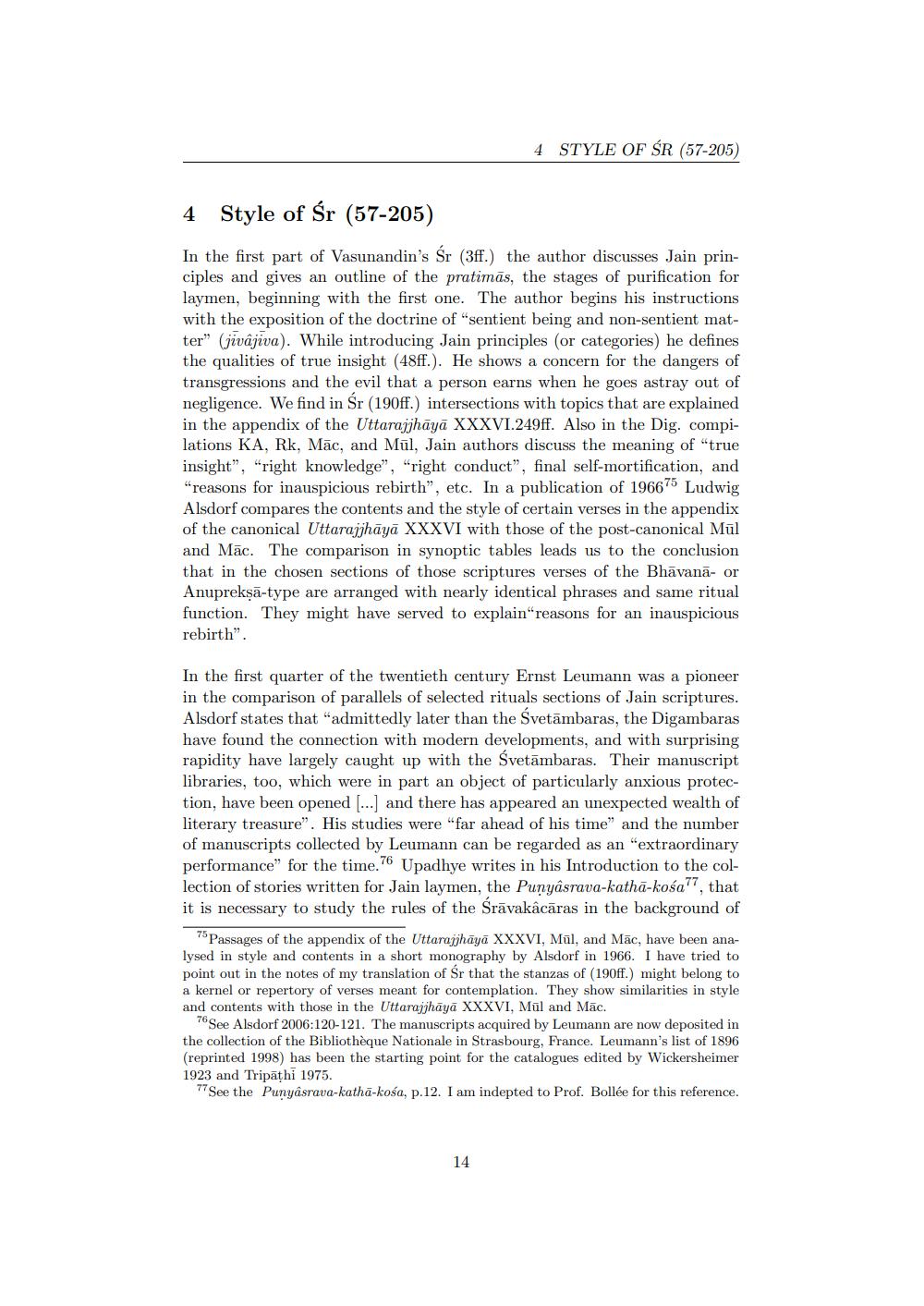________________
4 STYLE OF ŚR (57-205)
4
Style of Śr (57-205)
In the first part of Vasunandin's Sr (3ff.) the author discusses Jain principles and gives an outline of the pratimās, the stages of purification for laymen, beginning with the first one. The author begins his instructions with the exposition of the doctrine of "sentient being and non-sentient matter" (jivajiva). While introducing Jain principles (or categories) he defines the qualities of true insight (48ff.). He shows a concern for the dangers of transgressions and the evil that a person earns when he goes astray out of negligence. We find in Sr (190ff.) intersections with topics that are explained in the appendix of the Uttarajjhāyā XXXVI.249ff. Also in the Dig. compilations KA, Rk, Māc, and Mül, Jain authors discuss the meaning of "true insight", "right knowledge", "right conduct", final self-mortification, and "reasons for inauspicious rebirth", etc. In a publication of 196675 Ludwig Alsdorf compares the contents and the style of certain verses in the appendix of the canonical Uttarajjhāyā XXXVI with those of the post-canonical Mül and Māc. The comparison in synoptic tables leads us to the conclusion that in the chosen sections of those scriptures verses of the Bhāvanā- or Anuprekşā-type are arranged with nearly identical phrases and same ritual function. They might have served to explain" reasons for an inauspicious rebirth".
In the first quarter of the twentieth century Ernst Leumann was a pioneer in the comparison of parallels of selected rituals sections of Jain scriptures. Alsdorf states that "admittedly later than the Svetāmbaras, the Digambaras have found the connection with modern developments, and with surprising rapidity have largely caught up with the Svetāmbaras. Their manuscript libraries, too, which were in part an object of particularly anxious protection, have been opened [...) and there has appeared an unexpected wealth of literary treasure". His studies were "far ahead of his time" and the number of manuscripts collected by Leumann can be regarded as an "extraordinary performance” for the time.76 Upadhye writes in his Introduction to the collection of stories written for Jain laymen, the Punyâsrava-kathā-kosa", that it is necessary to study the rules of the Srāvakácāras in the background of
Passages of the appendix of the Uttarajjhāyā XXXVI, Mūl, and Māc, have been analysed in style and contents in a short monography by Alsdorf in 1966. I have tried to point out in the notes of my translation of Śr that the stanzas of (190ff.) might belong to a kernel or repertory of verses meant for contemplation. They show similarities in style and contents with those in the Uttarajjhāyā XXXVI, Mül and Māc.
See Alsdorf 2006:120-121. The manuscripts acquired by Leumann are now deposited in the collection of the Bibliothèque Nationale in Strasbourg, France. Leumann's list of 1896 (reprinted 1998) has been the starting point for the catalogues edited by Wickersheimer 1923 and Tripāțhi 1975.
77See the Punyâsrava-katha-kosa, p.12. I am indepted to Prof. Bollée for this reference.
14




